I wanted to get back to the type of posts I started to write in the early days of this blog, which was a focus on learning and exploring the life of recently observed organisms. I do this often on Instagram, but those explorations don’t often get highlighted on the blog. So in this blog, I’ve combined most of the creatures I featured on Instagram in October of 2022.
All these creatures, plants, and fungi were observed on the ancestral lands of the Wiyot, Yurok, and Sinkyone peoples.
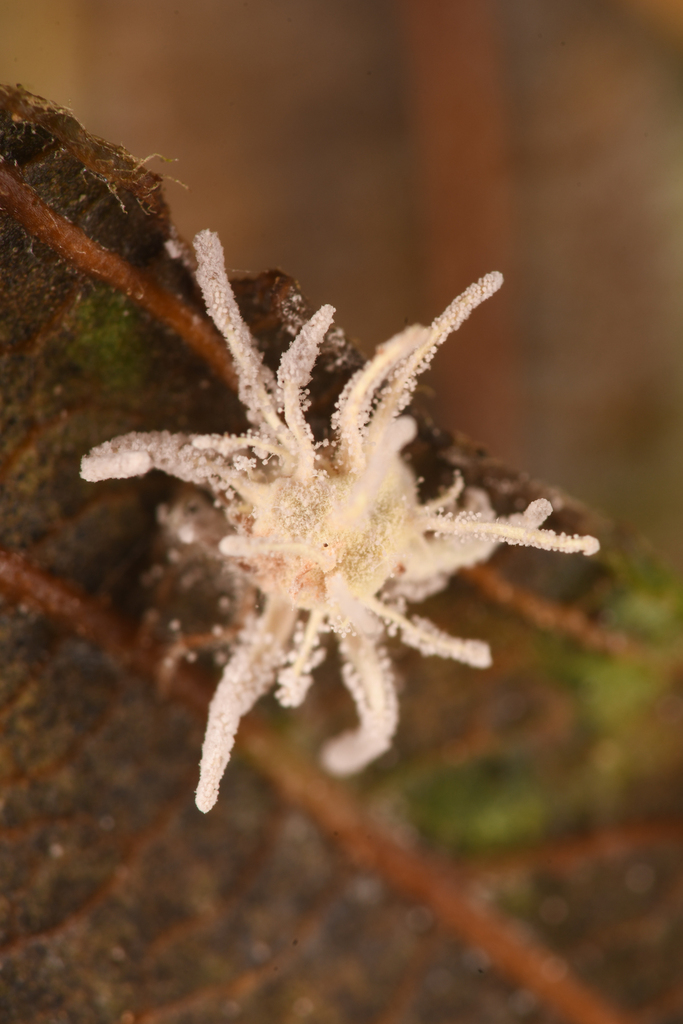
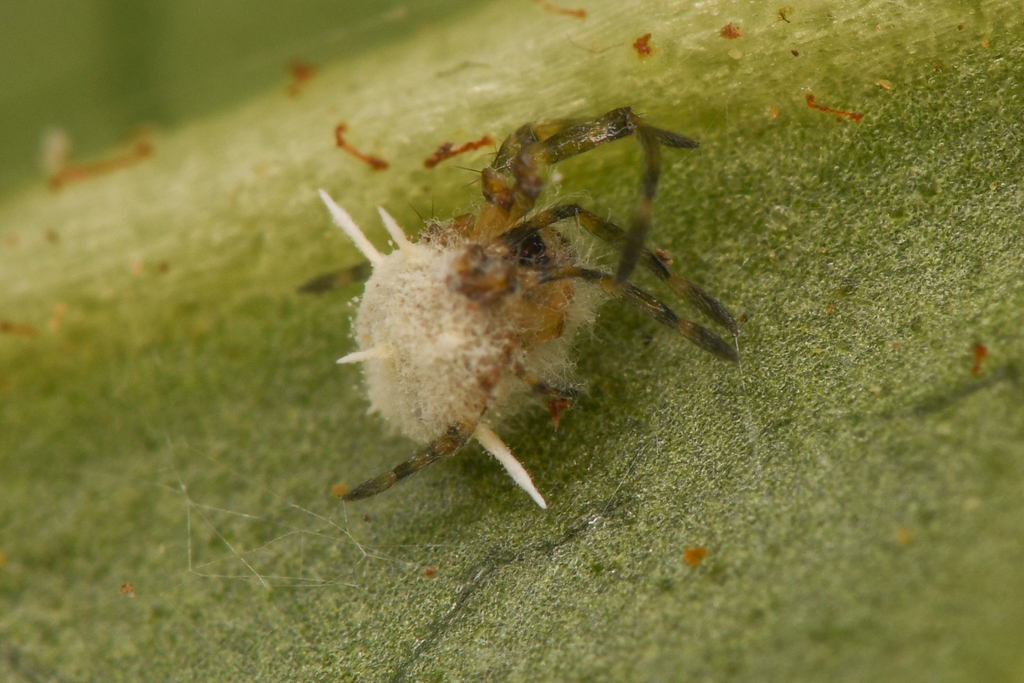
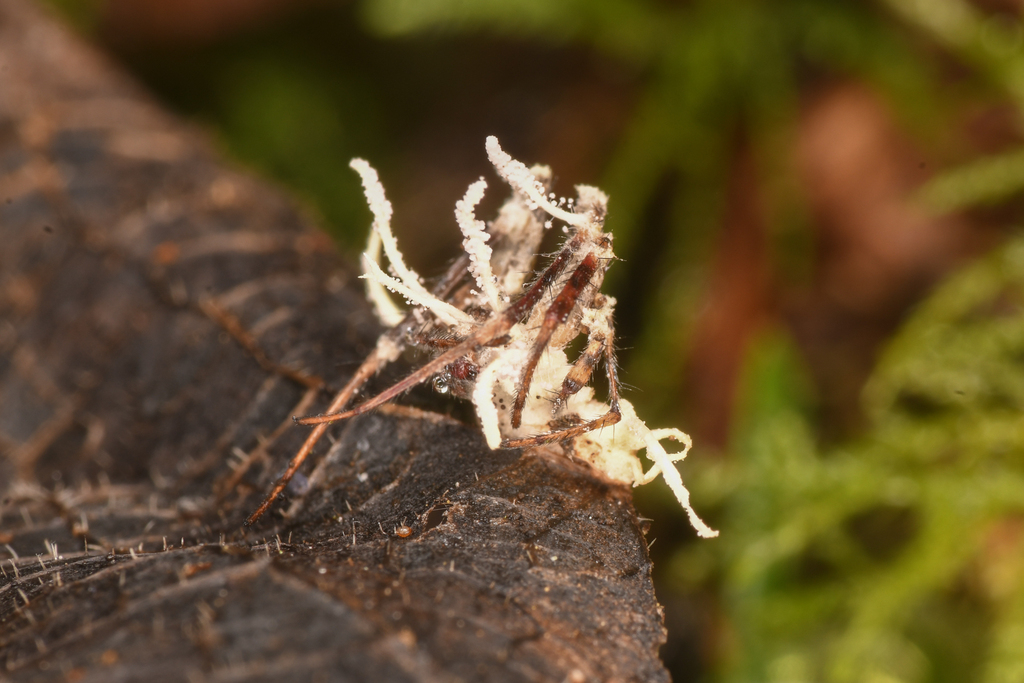
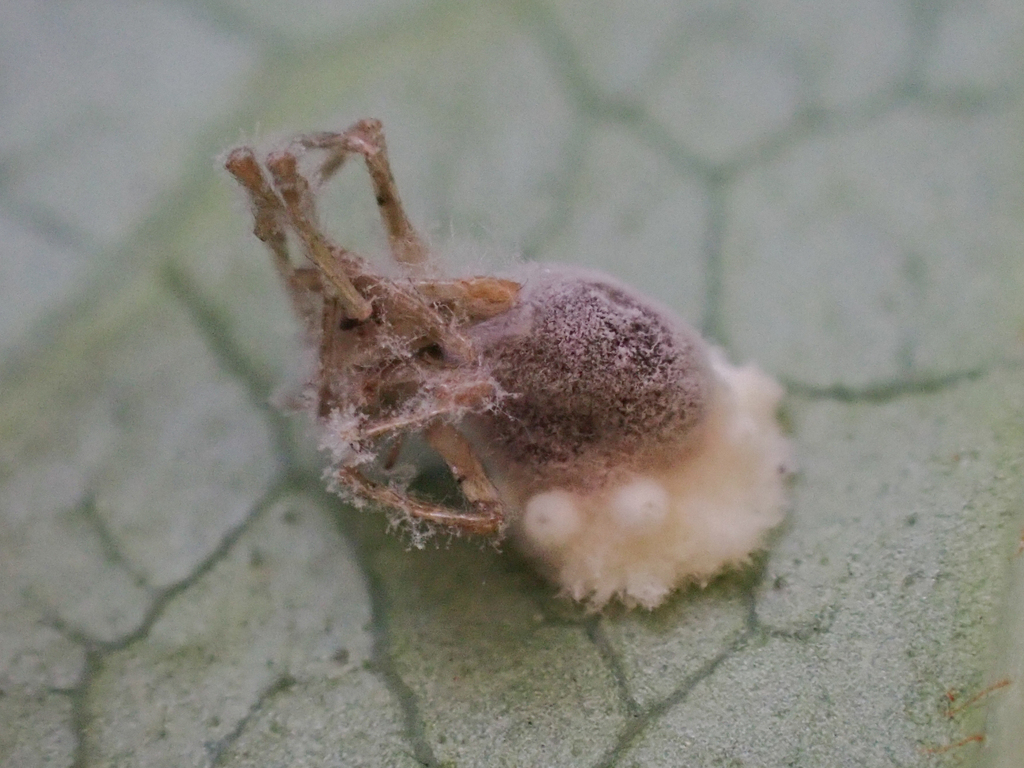

Gibellula
First up is a cool one. It’s something I’d never observe if it wasn’t for the help of a new friend, Mandy (@jellybaby on IG, MandyMushy on iNat).
Most of these were on the underside of Salal leaf, the white stuff is a fungus, thriving on a deceased spider.
Gibellula genera parasitizes arachnids. If a spider trots along a leaf, log, or other plant matter and picks up a spore, our poor friend is doomed. The yellow mycelium will penetrate and eventually digest the spider from the insides. Ooooooo juicy.
Once the spider no longer-RIP-these shoots begin to grow out from the spider. Soon after the mycelium turns white, like what you see in the photos.
If you look on iNaturalist the array of spikey structures this fungus creates is definitely worth a scroll. There are four species within this genus. In Gibellula pulchra the exoskeleton remains, so the shape of the spider is easily recognized. I’m not sure about the ones I’ve seen in Humboldt, but I’m pretty sure I found one in Costa Rica earlier this year. Perhaps the bottom right photo is G. pulchra.
Trevor and I looked for more Gibellula-ed spiders the following day and quickly found one. So if you lie in Salal territory go for a hunt!
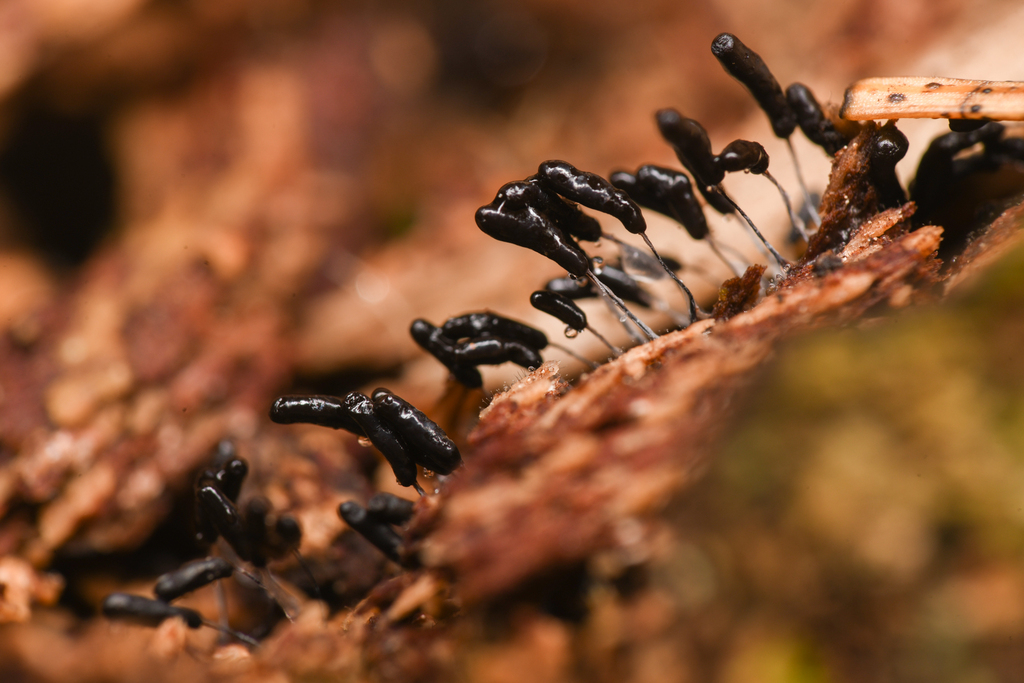

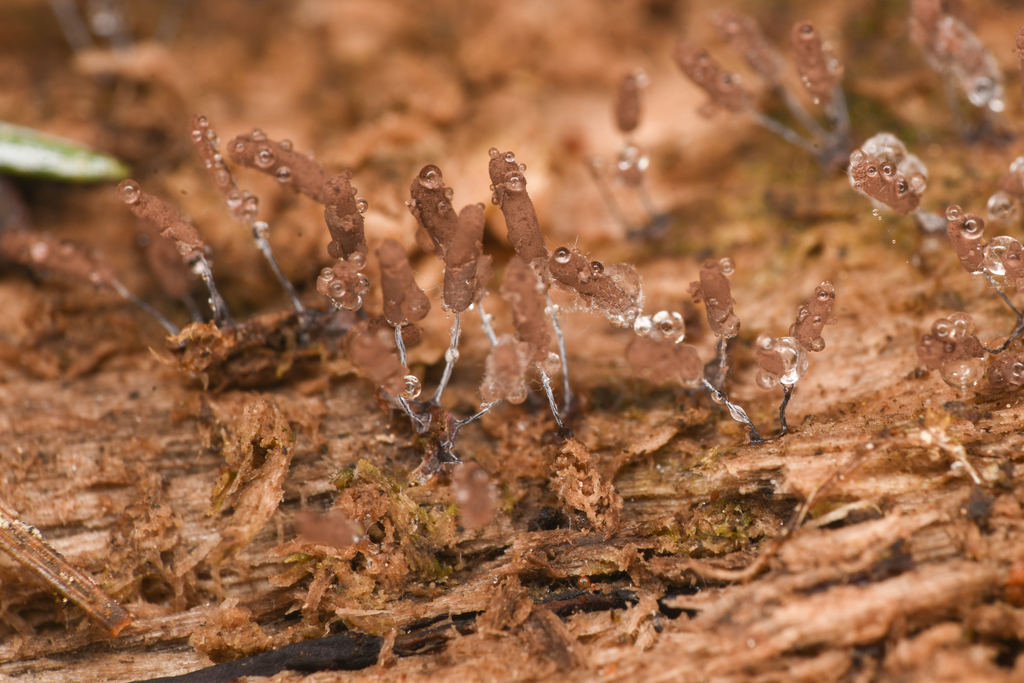
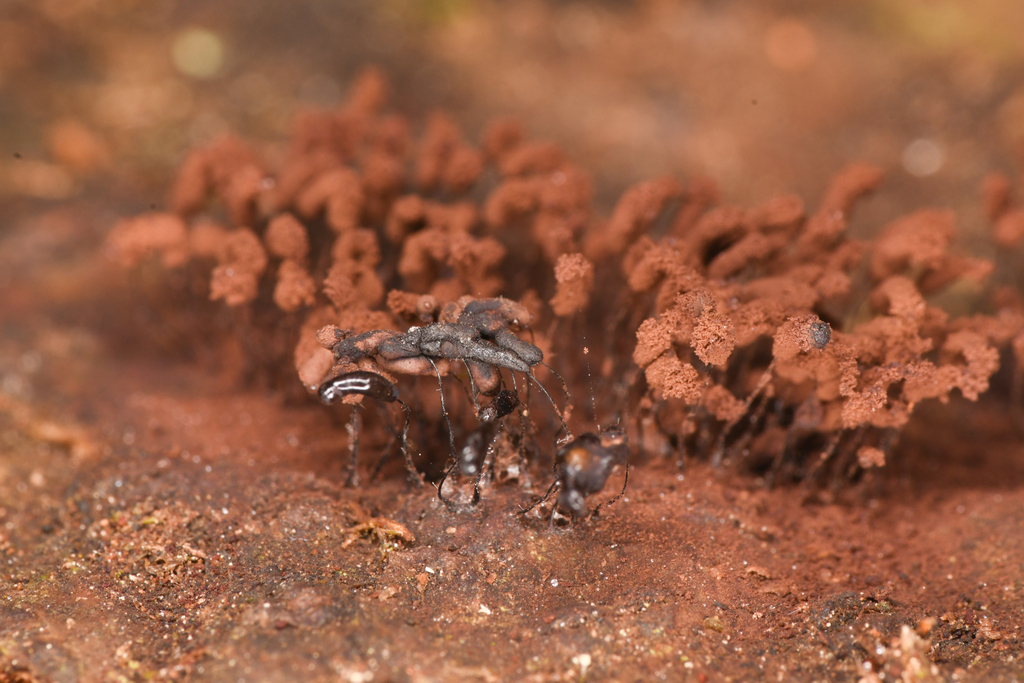

Stemonitopsis
Ooooooo dem DROPLETS!
Mandy and I were OBSESSED with all the glorious drippy drops on the slime molds while exploring the local fungi in the early days of October.
These slimy slime molds are in the genus Stemonitopsis, and perhaps someone someday can help identify them further.

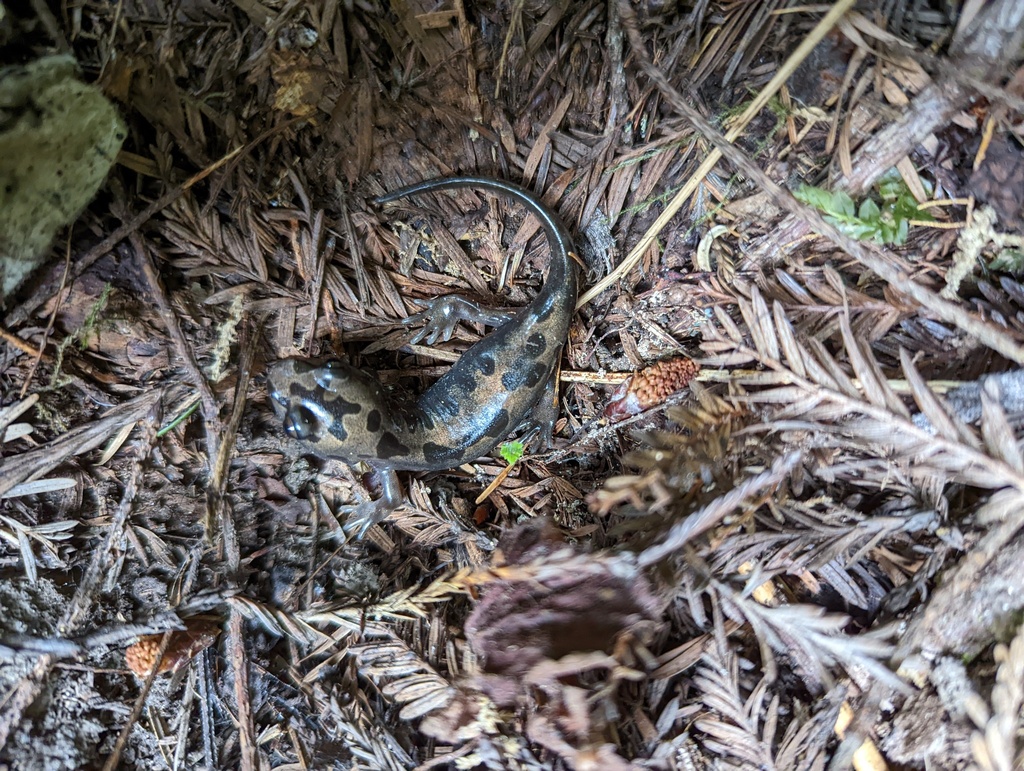
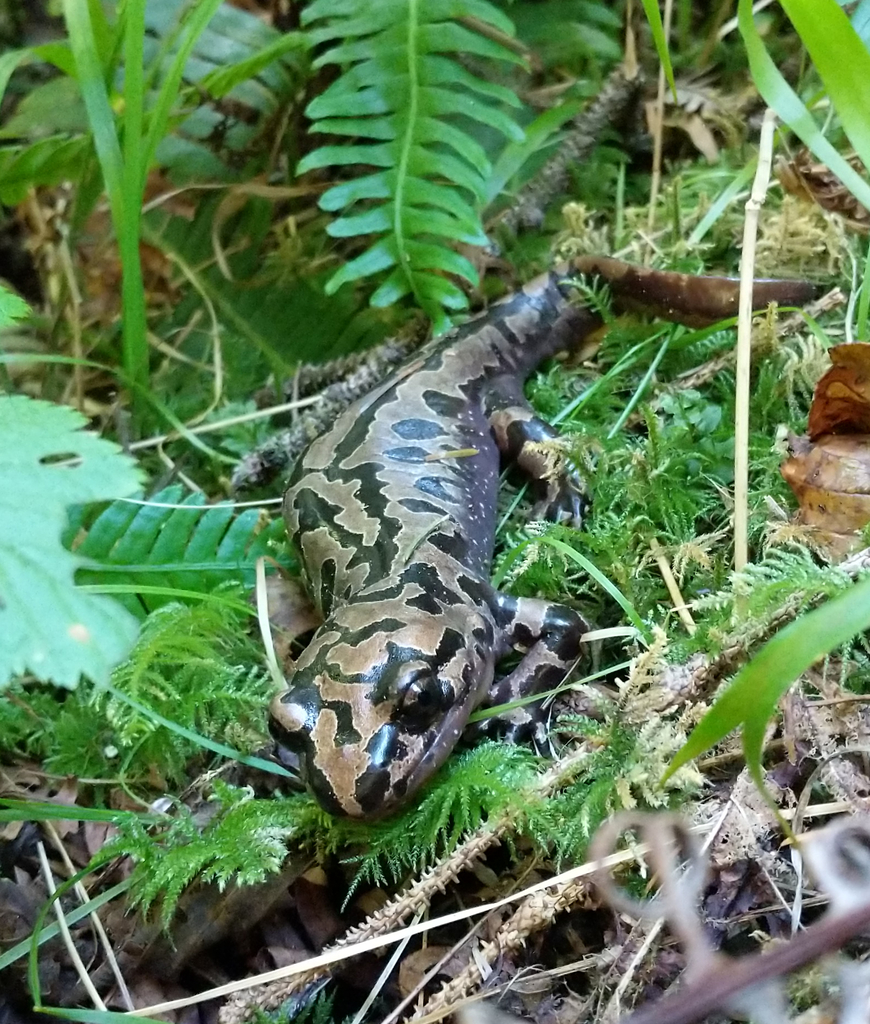
Coastal Giant Salamander
Above is a photo of a Coastal Giant Salamander, (Dicamptodon tenebrosus). These are the largest terrestrial salamander in North America, reaching up to 13 inches long!
This Sally is a member of the crew of creatures that will eat anything they can fit in their mouths. CRUNCH! Their strong jaws disable their prey which includes insects, worms, slugs, small rodents, and amphibians. With that broad head and strong bite, it’s understandable how they can be cannibalistic at times.
They can be found in the PNW. I’ve found twice as many aquatic larvae than adults with all the rummaging around in the forests and streams we do. Adults prefer to hang around underground burrows and emerge to mate and feed when humid and or wet outside. Apparently, they will break their nocturnal habits and come out during the day during the first heavy rains of winter, which haven’t really started yet. Perhaps this one is getting antsy!


Purple JellyDisc
Purple Jellydisc, Ascocoryne sarcoides! This gooey, yet stable, purple, but sometimes pinkish discs can be spotted on cut sections of logs.
These fungal discs are saprophytic, meaning they receive nutrients by breaking down and recycling dead organic material, like plant and animal matter. Give thanks to decomposers like this one this holiday season y’all, as they truly deserve it.
Lots of interesting rabbit holes to learn about with this species, its life-cycle, its relationship with trees with lower rot, and active compounds.
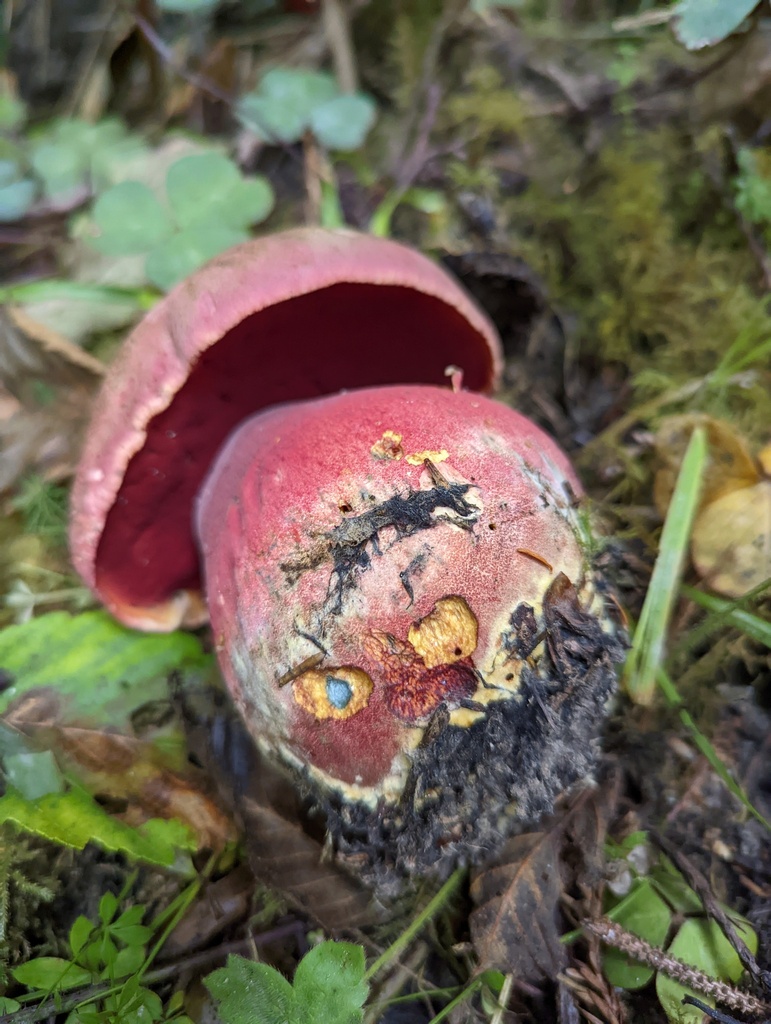
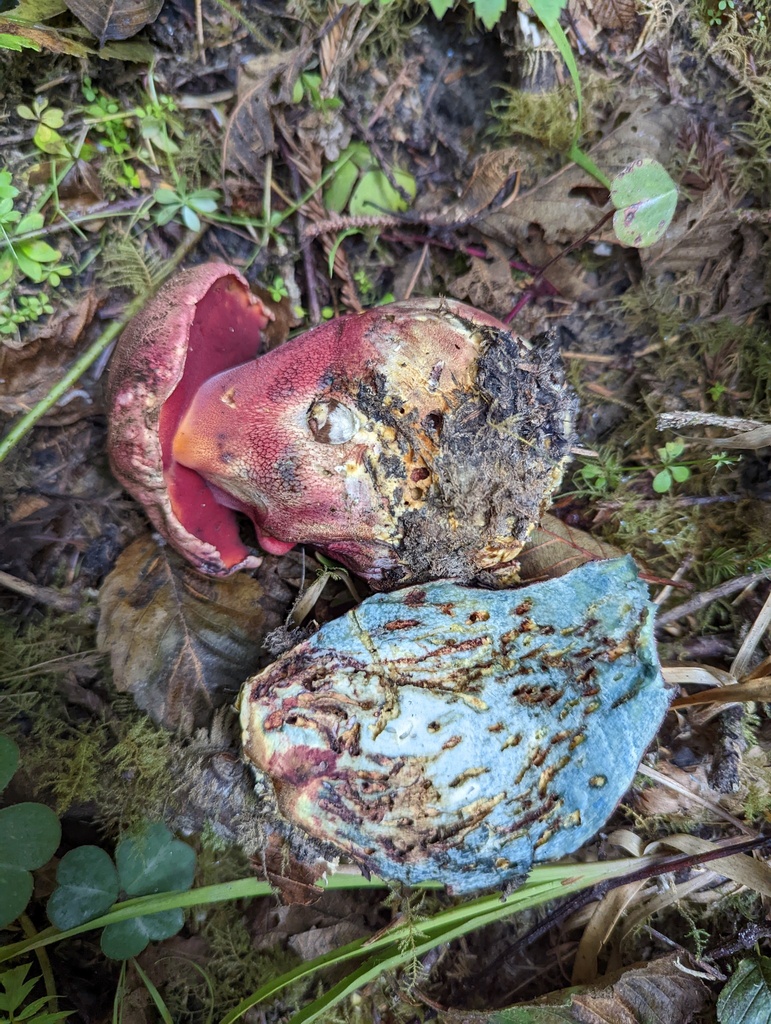
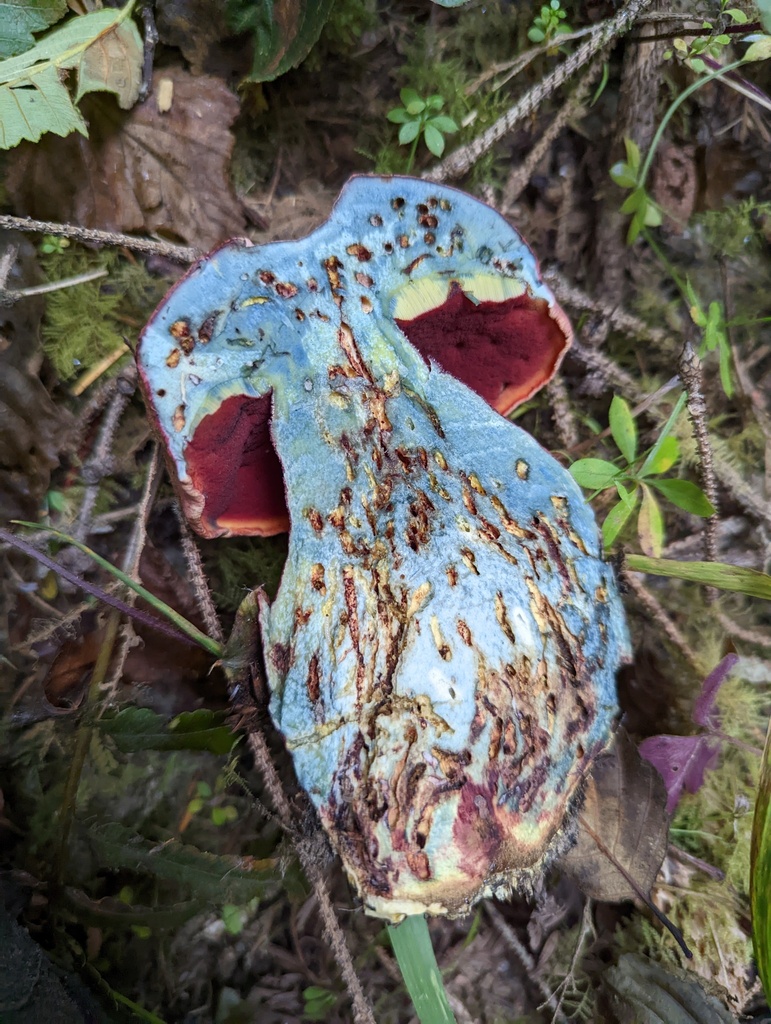
Red-Pored bolete
Trevor, Mandy, and I oooed and awwwed over the stunning colors of this Red-pored Bolete Rubroboletus pulcherrimus over the weekend.
As you can see, this bolete stains blue. Even though the bugs have devoured their way and set up shop in this mushroom I think the tunnels add to this mushie’s bravado.
Although it looks like R. eastwodiae (Satan’s bolete), ours lacks a thicker stalk. Good ol’ mushroom morphology and taxonomy, subtle differences means everything!
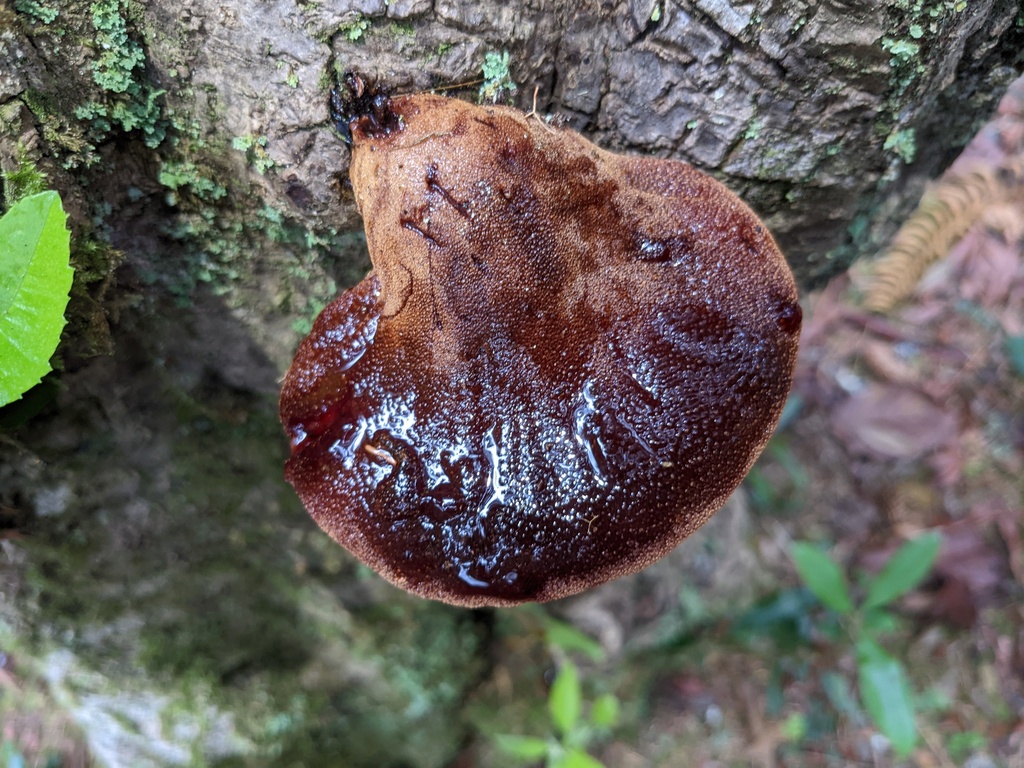

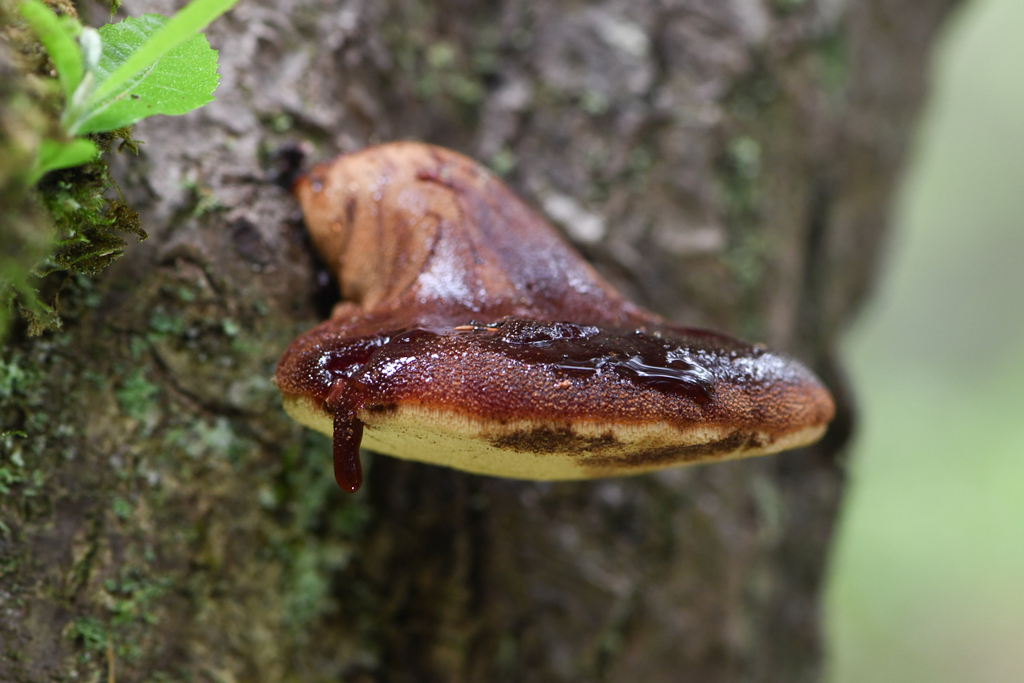
Beefsteak Polypore
Being as October is spooky season, it’s also gore-y gooey goodness season.
This Beefsteak Polypore, Fistulina hepatic is providing and thriving. As someone who does not consume the meat of the animal variety, I could take a chomp out of this meaty boy because it is indeed edible. It’s described as a choice edible that has a sour taste.
The obvious resemblance to a slab of raw meat does give me a bit of the ‘ick,’ BUT that juicy dripping drop on the side is simply delectable.
The host tree for this particular fungi is a Pacific Wax Myrtle.
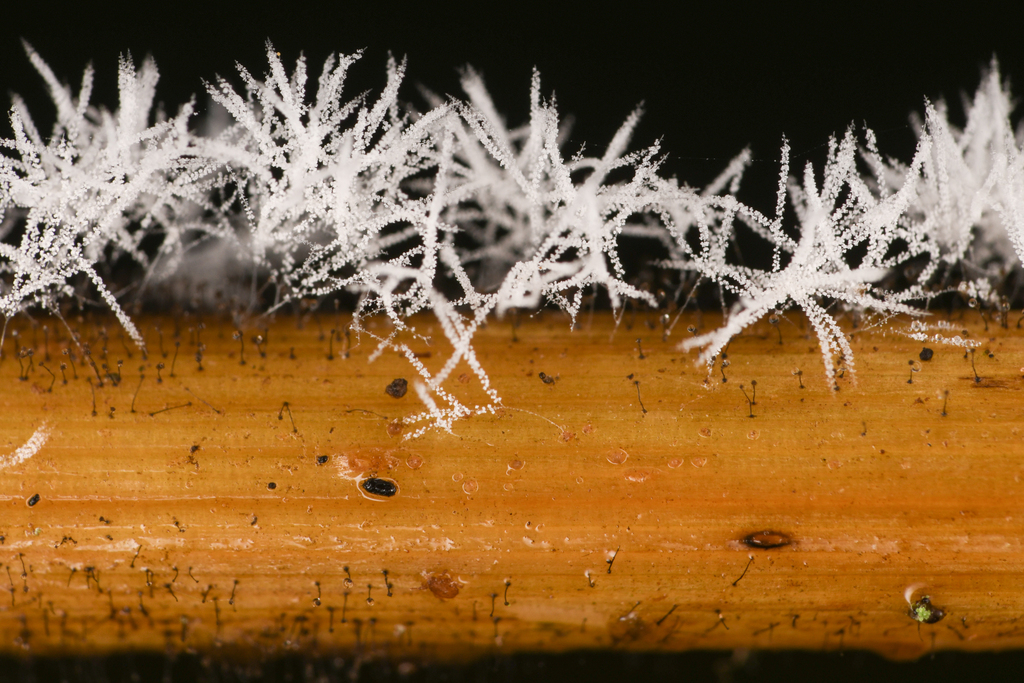
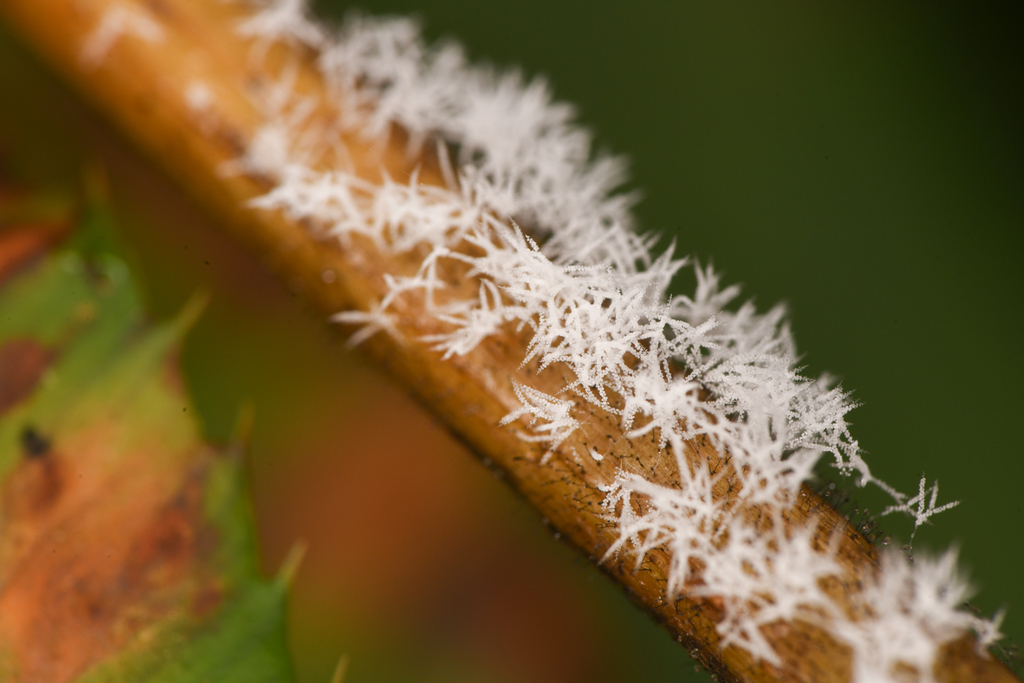
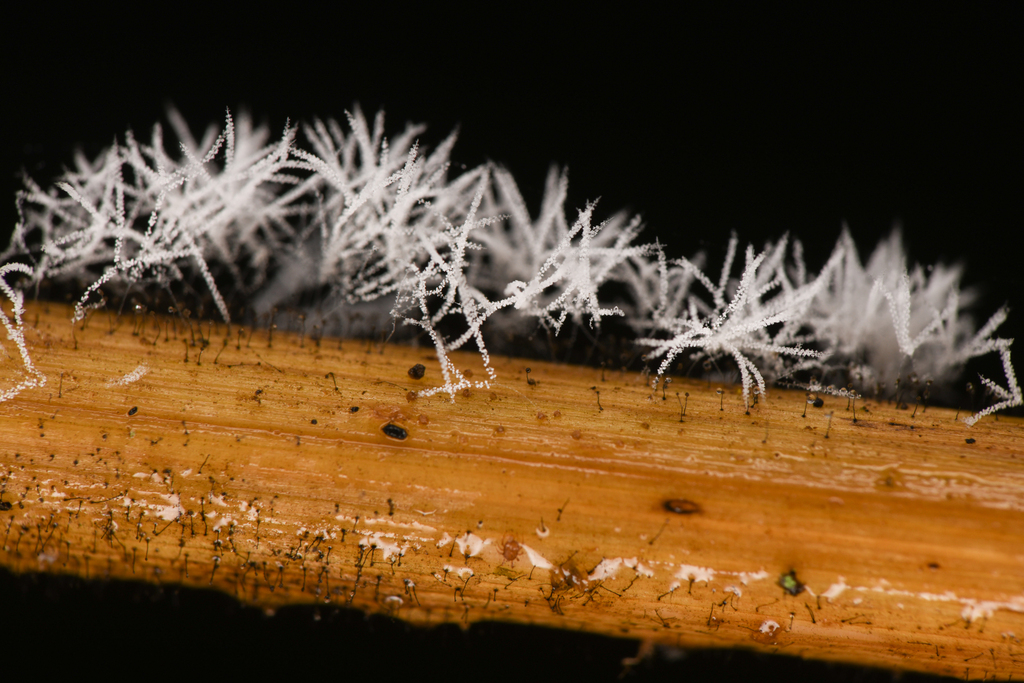
Botryosporium
Sparklers anyone?
This fungi Genus Botryosporium (most likely) was found on an elderly common bracken fern branch by Mandy.
While I’m quite happy with our current macro photography setup, I’d love to get even closer to these fluffy fungi spooky sparklers.
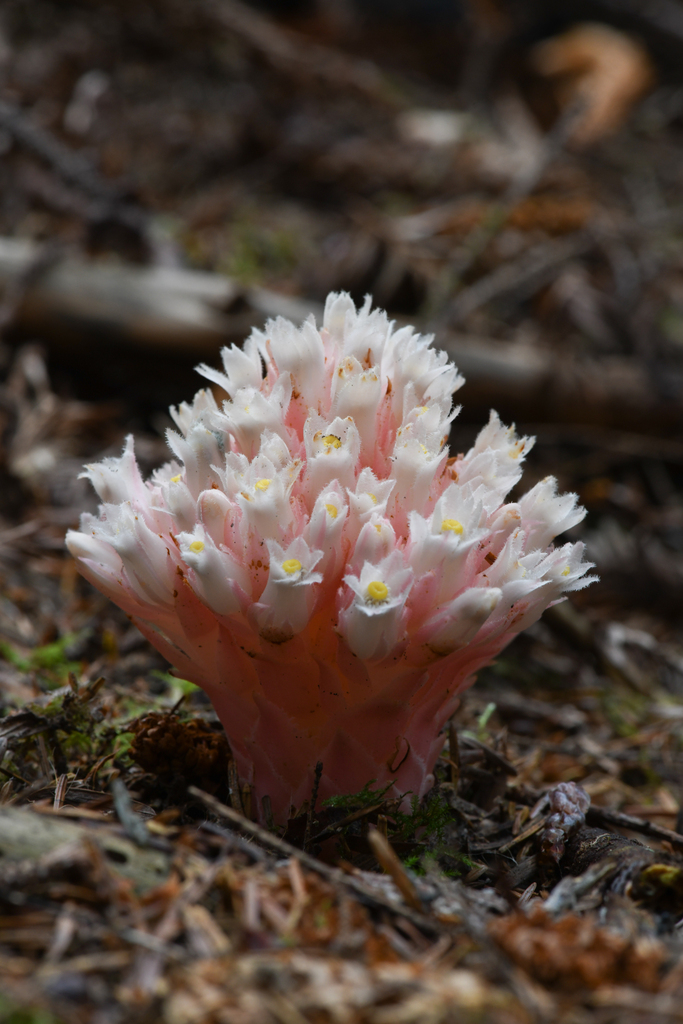

Gnome Plant
Do you have a plant or creature that has been on your wishlist to observe for WAY TOO LONG?
Well for Trevor and I, the Gnome Plant (Hemitomes congestum), this bizarre and beautiful plant was on that list. But since moving to Humboldt for the winter we’ve found quite a nice bundle!
By just this photo it might be easy to think this thang is part fungi, part plant, part mysterious lifeform. I mean the pink-to-white gradient with the supple yellow stigmas inside? Just exquisite!
If you reside along N. America’s west coast go out and search for the Gnome Plant, look in the leaf litter of a local dark and dank forest. Its variable color can camouflage surprisingly well, but also stick out like a beam of light when you spot it.
If it’s a plant, where is the green Chloe? Where’s the chlorophyll? Well, you guessed it, it’s parasitic! Mycotrophic! It grows via a rhizome (root-like structure) and has a sweet relationship with fungi and the neighboring trees to attain its nutrients.
Hopefully, I’ll observe its white berry at some point, which apparently has a cheesy scent.
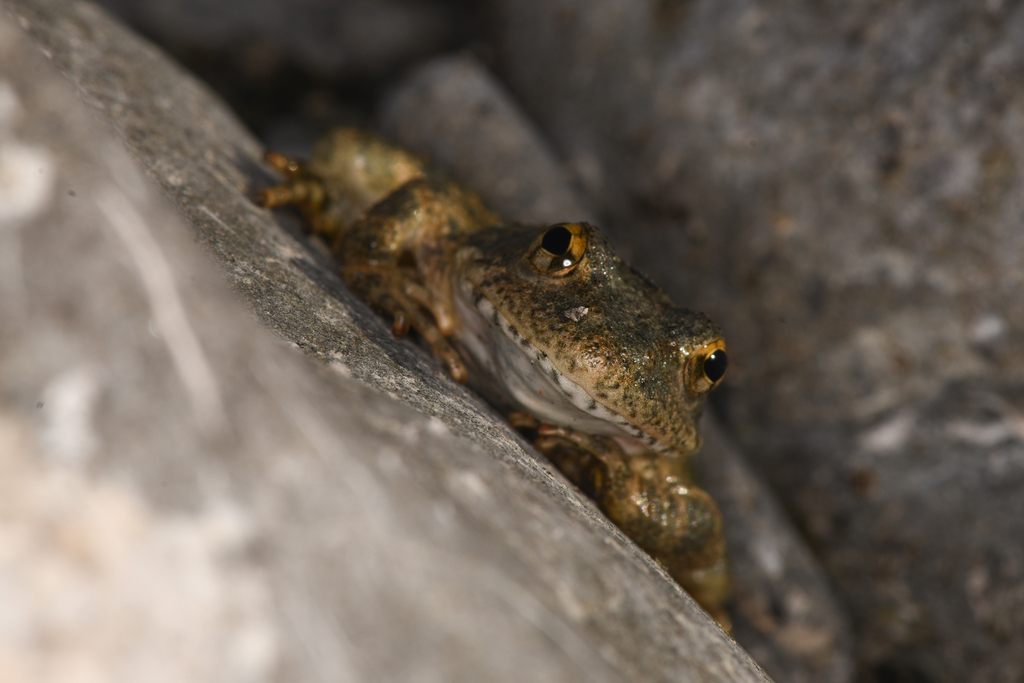
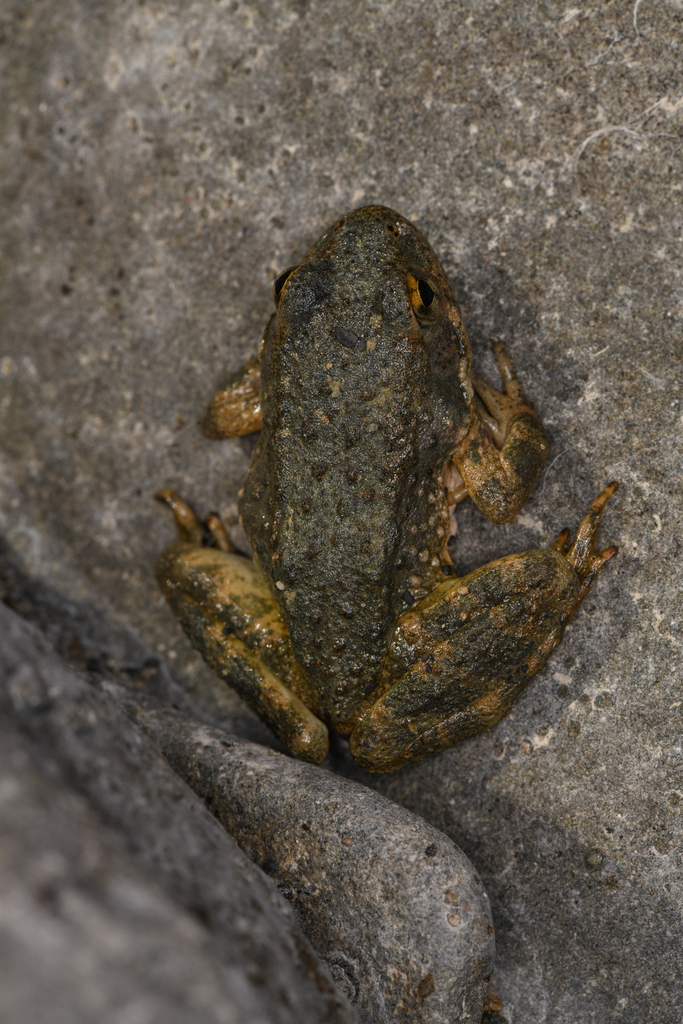
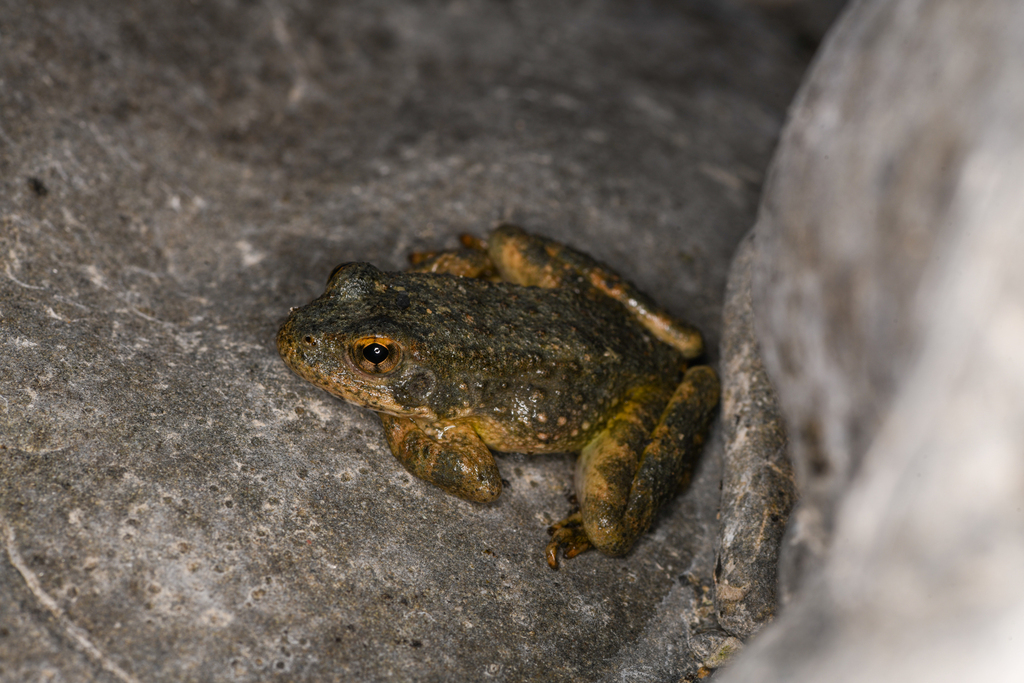
Foothill Yellow-legged Frog
I’ve found this froggo at the very north end of California, close to the Oregon border, and most recently in southern Humboldt County. It ranges from just north of LA to almost Portland Oregon in streams and rivers. My first sighting was a pair in amplexus (the frog version of “spooning”) in the Bay Area.
What’s so special about this little guy?
The foothill Yellow-legged Frog (Rana boylii) is actually a federal species of concern and labeled endangered by the state of California.
Like other amphibians’ habitat destruction, the construction of dams negatively affected their historical populations. Not only do dams alter the regular flow regime, artificially flood downstream habitats at irregular intervals. Additionally, the temperature below the dam is lower than what’s normal, stunting the frog’s development.
Additionally, pollution in the water, in the form of pesticides also messes with these frogs (and others), since they breathe through their skin. But wait there’s more! Changes in precip and temperature due to climate change, abnormally hot wildfires due to a host of human-made decisions, and water recreation activities ALSO negatively affect these frogs.
Us humans really know how to mess shiz up. Despite the doom and gloom, I’m always excited to see a Foothill Yellow-legged Frog, or any other froggo, as it seriously feels like those encounters may be limited in the future.
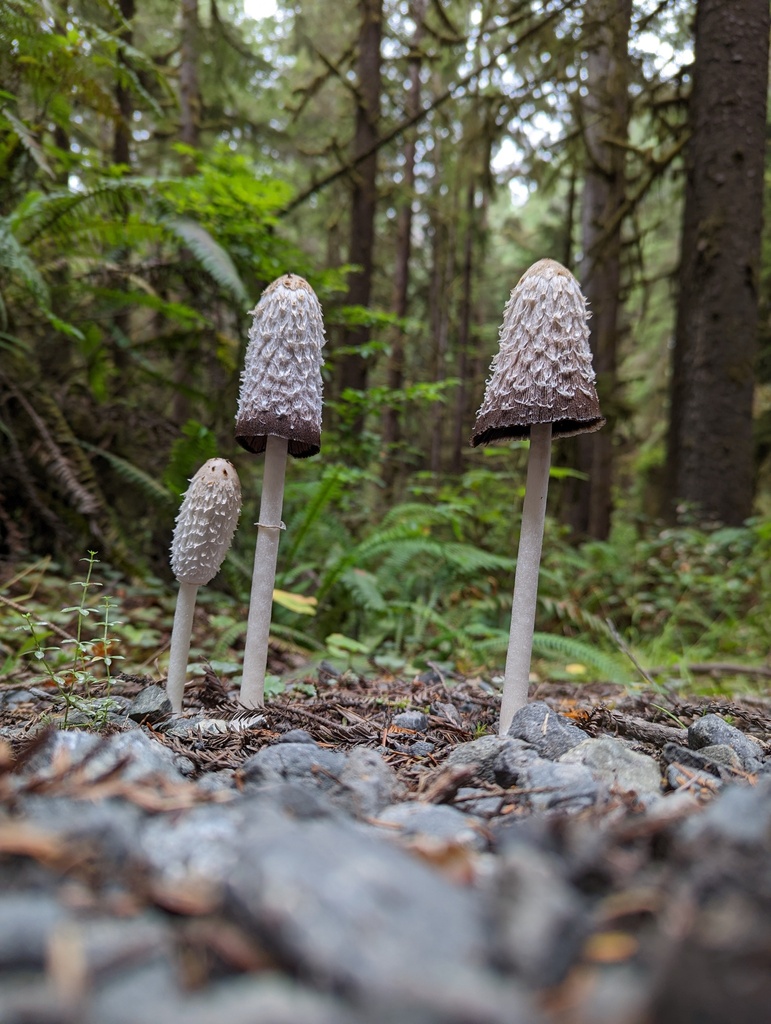
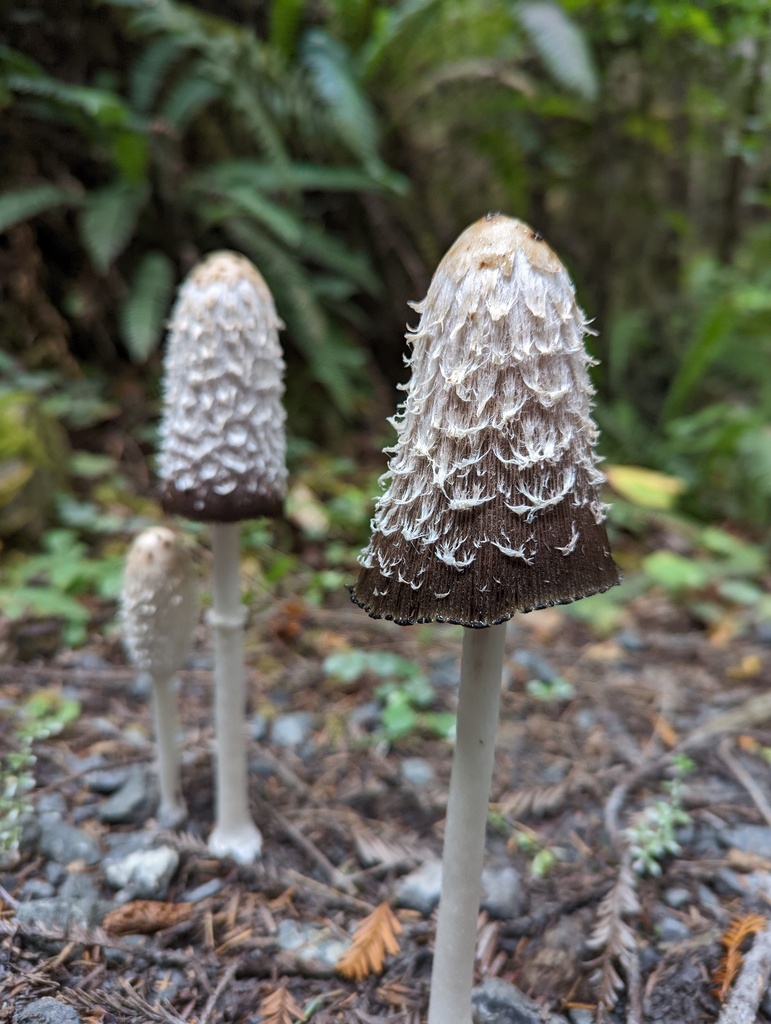
Shaggy Mane
Sometimes the side of the road provides the tallest mushies of the day.
These Shaggy Mane, Coprinus comatus were about a foot tall, BUT they can get up to half a meter tall! SHEEESH! Yup, metric and imperial measurements in one sentence. That’s what happens when you are a dual citizen and criss-cross the US-American border every year.

To see these fun and educational posts when they go live, follow me on Instagram:
P.S. These captions were all written over the span of a month, and each had various sources. Shoutout to those, of which I don’t have records, but many pages of Wikipedia were referenced, so BIG thanks to them.
Wow. Awesome.
LikeLike
Thanks Michael!
LikeLiked by 1 person
You’re welcome Chloe. My pleasure.
LikeLike